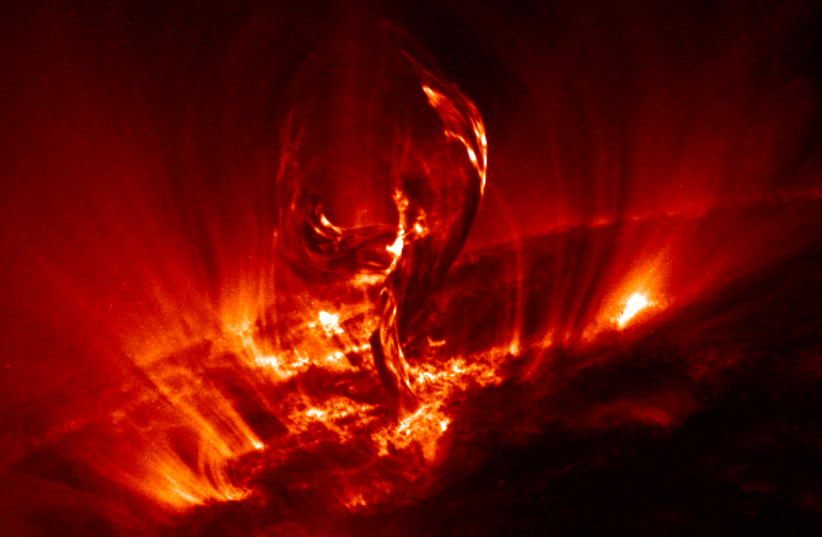Scientists now think they can predict when the Sun's next solar flare might explode, thanks to clues found in the Sun's upper atmosphere analyzed via NASA technology.
The findings were published in a study in the peer-reviewed academic periodical The Astrophysical Journal.
The researchers behind the study were from NorthWest Research Associates (NWRA) and they made use of NASA's Solar Dynamics Observatory (SDO) to take a close look at the solar upper atmosphere, known as the corona.
And then they found out where the fireworks will start.
What is a solar flare?
A solar flare is essentially a massive burst of electromagnetic radiation in the solar atmosphere.
How they occur is widely thought to be due to when the radiation is emitted after charged plasma particles get boosted by magnetic energy.

Solar flares can vary in length, some longer than 30 minutes.
However, while they happen on the Sun, they do still impact the Earth.
Many works of science fiction have portrayed solar flares as apocalyptic blasts of light, fire and radiation that could devastate the Earth. This is, essentially, a very grossly exaggerated understanding of how solar flares work.
To sum it up quickly, solar flares aren't at all dangerous for humans, at least not directly. But in the long term, it can cause other issues.
Solar flares emit X-rays and ultraviolet radiation, though they don't ever manage to pass through the atmosphere. What they are able to do, though, is to heat the atmosphere up. Now, this doesn't mean it's microwaving the Earth or anything since the heating is temporary. But this temporary heating can also temporarily make the outer atmosphere expand.
This can be a big problem for satellites in low Earth orbit, as it can actually drag them a bit down and start causing their orbits to decay.
In addition, absorbing solar flare electromagnetic radiation can also make the upper atmosphere more ionized, which can cause radio blackouts or just blackouts in general.
In addition, while they can't harm humans on Earth, they can theoretically harm humans in space.
Either way, what is arguably most intriguing about solar flares isn't just how they happen or what they cause, but when they happen.
This is important because while many people have tried in the past, there still isn't a reliable way to actually predict when solar flares will happen.
But this study may have changed that.
How can scientists predict solar flares?
The researchers behind this recent study managed to look at the corona and were able to find small signals.
These signals are essentially small flashes in the corona. They claim that these are a way to figure out which parts of the Sun are set to burst into solar flares.
There is some precedence to this, too. Groups of sunspots, darker and cooler regions on the Sun's surface, have often been thought to be a sign of impending solar flares. This research helps paint a better picture of the subject.
Using eight years' worth of images from NASA's SDO. the researchers managed to create a new image database, which has been made available to the public. Here, one can see the active regions of the Sun and spot the signs of a solar flare.
It is hoped that this new database can help with solar flare forecasts in the future, as further research can better expand what scientists know about solar flares.
